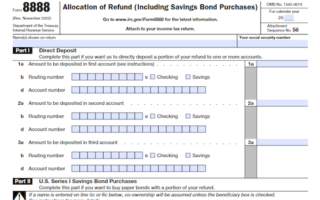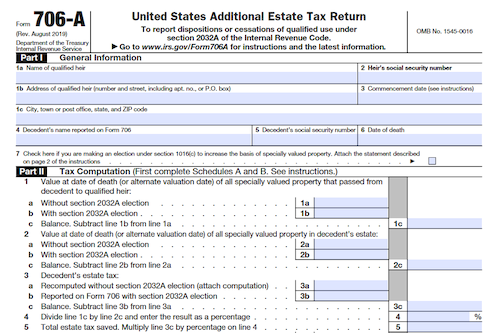This article provides detailed information about form 8815, which can be used to determine the amount of any interest that can be excluded from the taxpayer’s income for cashing series EE or I U.S. savings bonds issued after 1989. Eligibility for the exclusion requires the taxpayer to meet all of the four qualifications outlined in the source.
What is Form 8815?
Form 8815 is used to figure the amount of interest you may be able to exclude from your income on Series EE or I U.S. savings bonds cashed in 2022 that were issued after 1989. This exclusion may only be taken if the bonds were issued in your name or, if married, in both your name and your spouse’s name; if you were 24 or older when the bonds were issued; if you paid qualified higher education expenses in 2022; and if your modified adjusted gross income (AGI) is less than $100,800 for single/head of household/qualifying widow(er), or $158,650 if married filing jointly. Qualified higher education expenses include tuition and fees; contributions to a Coverdell ESA or a Qualified Tuition Program; and other payments for education expenses exempt from income tax.
IRS Form 8815 – Who Needs to Fill It Out?
Form 8815 needs to be filled out by taxpayers who cashed series EE or I U.S. savings bonds in 2022 that were issued after 1989, in order for them to exclude from their income part or all of the interest on those bonds. The bonds must be issued either in their name or, if married, in their name and their spouse’s name. Additionally, taxpayers must have been 24 or older when the bonds were issued, and their filing status must be any status except married filing separately. Furthermore, their modified AGI must be less than $100,800 if single, head of household, or qualifying widow(er), or must be less than $158,650 if married filing jointly. Lastly, taxpayers should keep records to verify the interest they excluded such as bills, receipts, canceled checks, or other documents, as well as the serial number, issue date, face value, and total redemption proceeds (principal and interest) of each bond.
Step-by-Step: Form 8815 Instructions For Filling Out the Document
This form is used to determine the amount of interest you may be able to exclude from your 2022 taxable income from series EE or I U.S. savings bonds that were issued after 1989. All 4 criteria must be met for you to be eligible for the exclusion: you must have cashed qualified U.S. savings bonds in 2022 that were issued after 1989; you must have paid qualified higher education expenses in 2022 for yourself, your spouse, or your dependents; you cannot be Married Filing Separately; and your modified Adjusted Gross Income must be less than $100,800 if single, head of household, or qualifying widow(er), or $158,650 if married filing jointly. Be sure to keep all written records (listed on this form), your Form 8818 (if applicable), bills, receipts, canceled checks, etc. It is important to verify all expenses and bond details for each individual. Every detail on the form– name, address, post-1989 bonds serial numbers, issue and redemption dates, etc.– are essential and need to be accurate to figure out the amount of interest to be excluded.
Below, we present a table that will help you understand how to fill out Form 8815.
| Information Required for Form 8815 | Details |
|---|---|
| Criteria for Exclusion | Meet all 4 criteria for eligibility |
| Qualified Bonds | Cashed qualified U.S. savings bonds in 2022 |
| Education Expenses | Paid qualified higher education expenses in 2022 |
| Filing Status | Not Married Filing Separately |
| Modified AGI | Less than $100,800 (single, head of household, or qualifying widow(er)) or $158,650 (married filing jointly) |
| Documentation | Keep all necessary records and details accurate |
Do You Need to File Form 8815 Each Year?
Not typically. But, if you cashed series EE or I U.S. savings bonds in 2022 that were issued after 1989, you must use Form 8815 to figure the amount of any interest that you may be able to exclude from your income. In order to qualify for the exclusion, the bonds must be series EE or I U.S. savings bonds issued after 1989 in your name or, if you are married, they may be issued in your name and your spouse’s name, and you must have been age 24 or older before the bonds were issued. Recordkeeping is necessary for the exclusion; you must keep records that verify interest you exclude, such as bills, receipts, canceled checks, or other documents showing you paid qualified higher education expenses, as well as a written record of each post-1989 series EE or I bond you cashed with the serial number, issue date, face value, and total redemption proceeds.
Download the official IRS Form 8815 PDF
On the official IRS website, you will find a link to download Form 8815. However, to make it easier for you, we are providing the link in our article, which comes directly from the official irs.gov website! Click to download: Form 8815
Sources:




